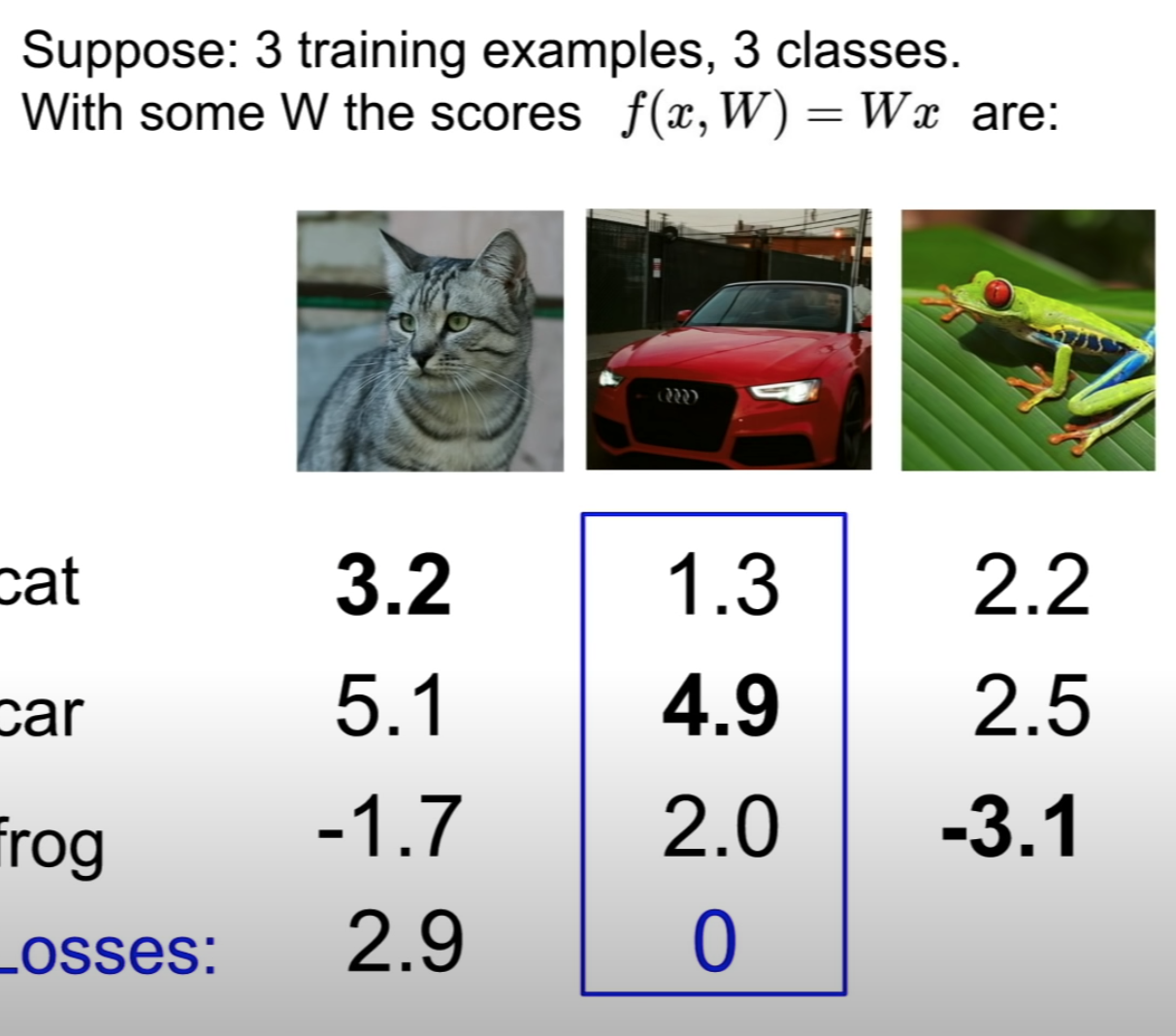Cs231n lecture 3 loss function
Loss Function¶
Multiclass SVM Loss: hinge loss¶

S_{y_j} is the predict right score (target score) S_j is the predict wrong score (all the other) Total Loss is:
To calculate the loss for predicting car: max(0, cat score - car score + 1) + max(0, frog score - car score + 1) = max(0, -2.6) + max(0, -1.9) = 0
after using the same method to calculate each of the classes, the averge is the result: (2.9 -> for cat + 0 -> for car + 12.9 -> for frog) / 3 = 5.27
Regularization¶
This term makes sure to choose "simpler" W instead of complicated ones that only fit training data, so that the power is lower for each term (high penalty for using high power poly).
Softmax Classifier (Multinomial Logistic Regression): cross-entropy loss¶
score is the probabilities for each class, and the sum of all classes equals to one (100%).
Loss for each category:
where s is our model:
plug in to the first equation:
The min loss is 0 and max loss is +inf
Finding the lowest score (with respect to W) -- Optimization¶
- random (never use)
- find the slope (using gradient: numeric for debugging and analytic for calculating)
Gradient Descent¶
while True:
weights_grad = evaluate_gradient(loss_fun, data, weights)
weights += - step_size * weights_grad # perform parameter update
step_size is also the learning rate, it's the first thing to set
Stochastic Gradient Descent (SGD)¶
Use when there are a lot of training set, in each iteraion, take a samples data from the training set (typically 32/64/128/256) called minibatch
while True:
data_batch = sample_training_data(data, 256)
weights_grad = evaluate_gradient(loss_fun, data_batch, weights)
weights += - step_size * weights_grad # perform parameter update